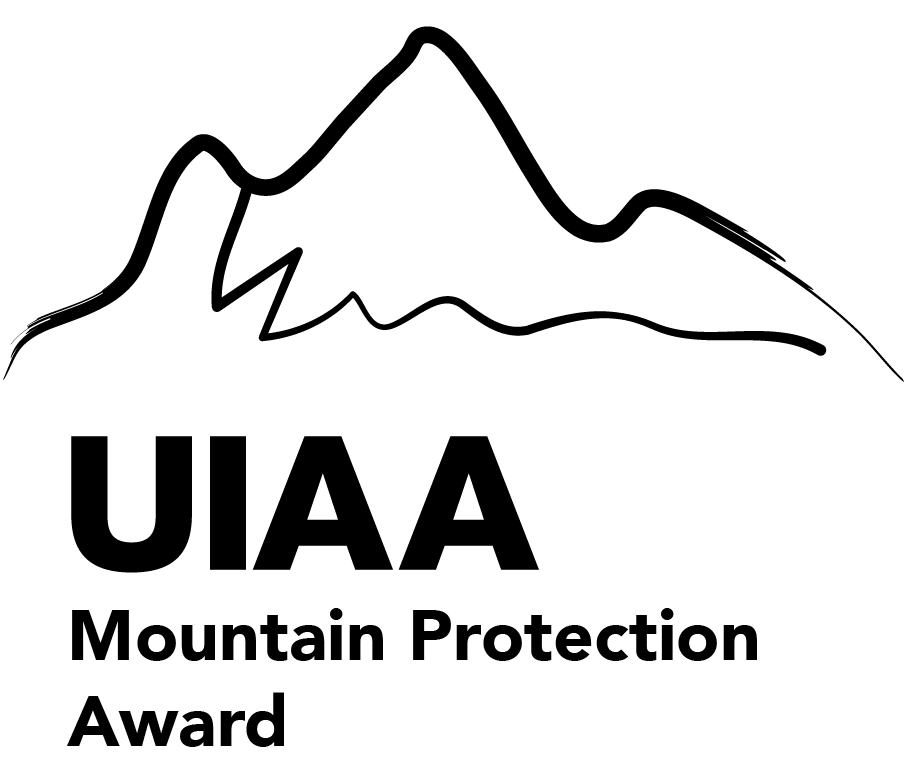Host country & expedition safety
Kyrgyzstan is a remarkably stable and democratic country, which has not been plagued by autocratic regimes and religious extremism of the other ex-Soviet "...stan" countries. This makes it even more achievable, realistic and interesting to become a Kyrgyzstan volunteer working in snow leopard conservation.
Biosphere Expeditions, as a professional organisation, has full emergency and medical evacuation procedures in place and the expedition leader is a trained wilderness first aider. In all the years since starting operations in 1999, Biosphere Expeditions participants have never suffered any serious injuries (the worst was a broken wrist due to a slip in the mud in the jungle), let alone deaths. We will treat you like capable, responsible adults, though, and not mollycoddle or mother you.
Aims & objectives
The aims of this Kyrgyzstan volunteer project to the Tien Shan mountains, working in snow leopard and wildlife conservation are:
(1) To estimate snow leopard numbers and activity through field signs, by tracking and observation.
(2) To assess the status and distribution of their prey species such as the Tien Shan argali and the Central Asian ibex.
(2) To survey small animals, such as marmots, and birds.
(3) To involve local people in snow leopard conservation through education, capacity-building and the creation of economic benefits.
Background
Kyrgyzstan is a country located in Central Asia and often referred to as the "Switzerland of Central Asia". Landlocked and mountainous, Kyrgyzstan is bordered by Kazakhstan to the north, Uzbekistan to the west, Tajikistan to the southwest and China to the east. Its capital and largest city is Bishkek.
Kyrgyzstan is further from the sea than any other country and all its rivers flow into closed drainage systems, which do not reach the sea. The mountainous region of the Tien Shan covers over 80% of the country, with the remainder made up of valleys and basins. The highest peak is Jengish Chokusu (Pik Pobedy) 7,439 m and more than half the country is above 2,500 metres. Steppe and alpine vegetation dominate the landscape; glaciers and eternal snow cover over 3% of the country’s total area. The climate in Kyrgyzstan is continental with a small amount of rainfall.
Little is known about the status and distribution of the globally endangered snow leopard in the area and its interaction with prey animals such as the Tien Shan argali and Central Asian ibex, and its reliance on smaller prey such as marmots, ground squirrels and game birds. Biosphere Expeditions will, through its Kyrgyzstan volunteers, provide vital data on these issues, which can then be used in the formulation of management and protection plans. The expedition will also work with locals in an effort to build capacity, educate and involve local people in snow leopard conservation and generate income through responsible tourism activities. Working from a mobile base camp, the expedition will work in areas that are protected (such as Ala Archa National Park) and those that are not.
Study species
Snow leopard (Uncia uncia), Central Asia ibex (Capra sibirica alaiana), Tien Shan argali (Ovis ammon karelini)
Other (study) species, all in mountain habitats of granite cliffs, lakes and conifer forests - Mammals: Marmot, manul, lynx, wolf, roe deer, as well as a number of mustelids. Birds: The Tien Shan mountains harbour a very rich bird life, including bearded vulture, long-legged buzzard, golden eagle, saker falcon, cinereous vulture, Himalayan snowcock, sandpipers, ibisbill, Brandt’s mountain finch and various species of wagtail and crane.
Typical day as a snow leopard volunteer in Kyrgyzstan
Activities are usually decided the night before and then confirmed in the morning, depending on the weather. The whole set-up of this Kyrgyzstan volunteer expedition is quite flexible so that you can participate according to the weather conditions, your skills, general fitness and how you feel on the day.
Your typical day may consist of (1) taking your survey group’s vehicle into the mountains to survey access points and from there search in the mountains and valleys for snow leopards, argali, ibex and their field signs, or (2) climbing a mountain and spending the night there, observing using field scopes and searching for snow leopard and other animal activity, or (3) placing, checking and retrieving camera traps, or (4) finding and identifying other animals such as birds and small mammals by various means by day and occasionally by night, or (5) working with the anti-poaching patrol on educational and other snow-leopard conservation activities with and within local communities.
Most research groups will return to our mobile tented base for the night where food is prepared by the expedition cook. There will also be rest and admin days as required and on some days you may be asked to help out with some camp and kitchen work.
Research area
The Kyrgyz Ala-Too (Кыргыз Ала-Тоосу, also Kyrgyz Alatau, Kyrgyz Range) is a large range in the northern Tien Shan mountains. The range is situated just south of the capital city of Bishkek and the views from the city itself are stunning and form a backdrop that is unique in the world. The Kyrgyz Ala-Too range stretches for a total length of 454 km from the west end of Issyk-Kul to the town of Taraz in Kazakhstan. It runs in an east-west direction, separating into the Chuy, Kochkor, Suusamyr and Talas valleys. The western part of Kyrgyz Ala-Too serves as a natural border between Kyrgyzstan and Kazakhstan. The range’s highest mountain is Alamyudyun Peak at 4855 m.
The mountains are divided by several river valleys and there is a great variety of landscapes. There are hollows with semi-desert landscapes, alpine peaks, narrow river canyons and broad valleys, highland tundra and deep natural limestone gorges, open steppes, permanent snow and glaciers and tracts of forest, as well as a multitude of lakes, wild rivers and waterfalls. Forests of larch, cedar, spruce and pine (but very few deciduous trees) cover more than a half of the mountain territory.
Many threatened animal and plant species, a great number of them endemic, are present in the area with a recent count showing at least 70 mammal, 376 bird, 44 fish species and over 3000 insect species. This extraordinary biodiversity is one more reason to become a Kyrgyzstan snow leopard volunteer.
The Kyrgyz people are descendants of several different nomadic Turkish ethnic groups in Central Asia and were first mentioned in writing in 201 BC. Kyrgyzstan is one of the active members of the Turkic Council and the TÜRKSOY community. Kyrgyzstan's history is one of Turkish and Mongol, and more recently Soviet and Russian domination. Independence from the Soviet Union was declared on 31 August 1991 and Kyrgyzstan became, and has stayed, a very stable unitary parliamentary republic.
Partners
NABU (= Naturschutzbund = nature protection alliance), founded in 1899, is one of Germany’s oldest and its biggest conservation NGO. In Kyrgyzstan, NABU, in cooperation with the Kyrgyz government, is implementing a programme to conserve the snow leopard through a twin approach of research and the prevention of illegal hunting and trade of the endangered species.
The Ilbirs Foundation, founded in 2016, is a Kyrgyz non-profit environmental organization. It carries out educational, charitable, cultural, information, research and other socially useful activities with the aim of improving the natural environment and the conservation of rare and endangered species of animals and plants in Kyrgyzstan.
And finally (almost)
Our expeditions are not about playing the primitive, neither are we a military style 'boot-camp'. Our expedition leader and the local scientist will be by your side and we believe strongly that we get the best out of our expedition teams by making them comfortable, safe and well fed. You won’t be living in the lap of luxury (this is a citizen science snow leopard volunteering expedition after all), but we will do our best to make you feel comfortable and at home in your working environment, as this is the key to a well-balanced and successful expedition.
And finally (briefing)
Even more details, including instructions on how to get to the assembly point, are in the expedition briefing for this Kyrgyzstan volunteer project below.









